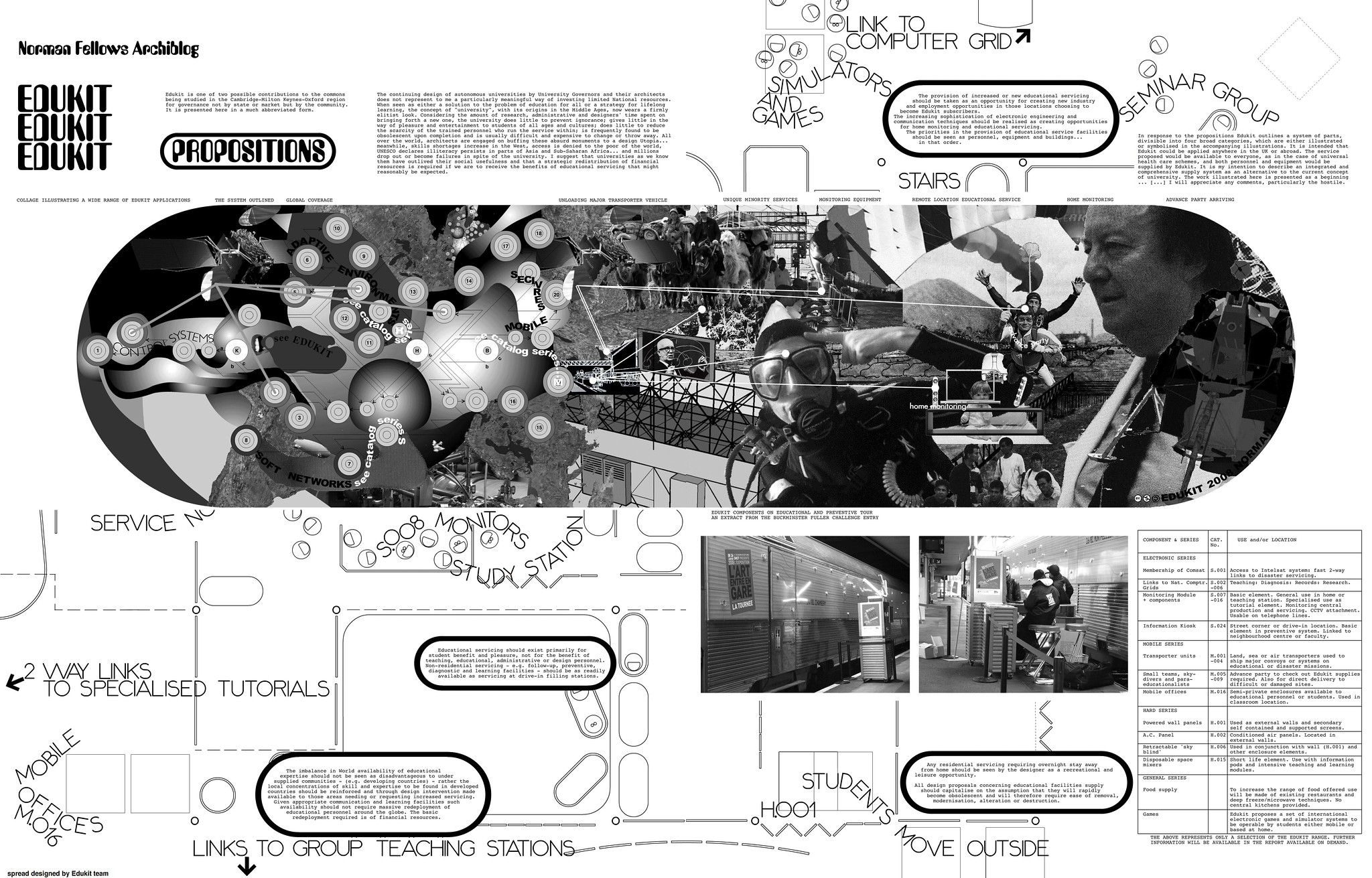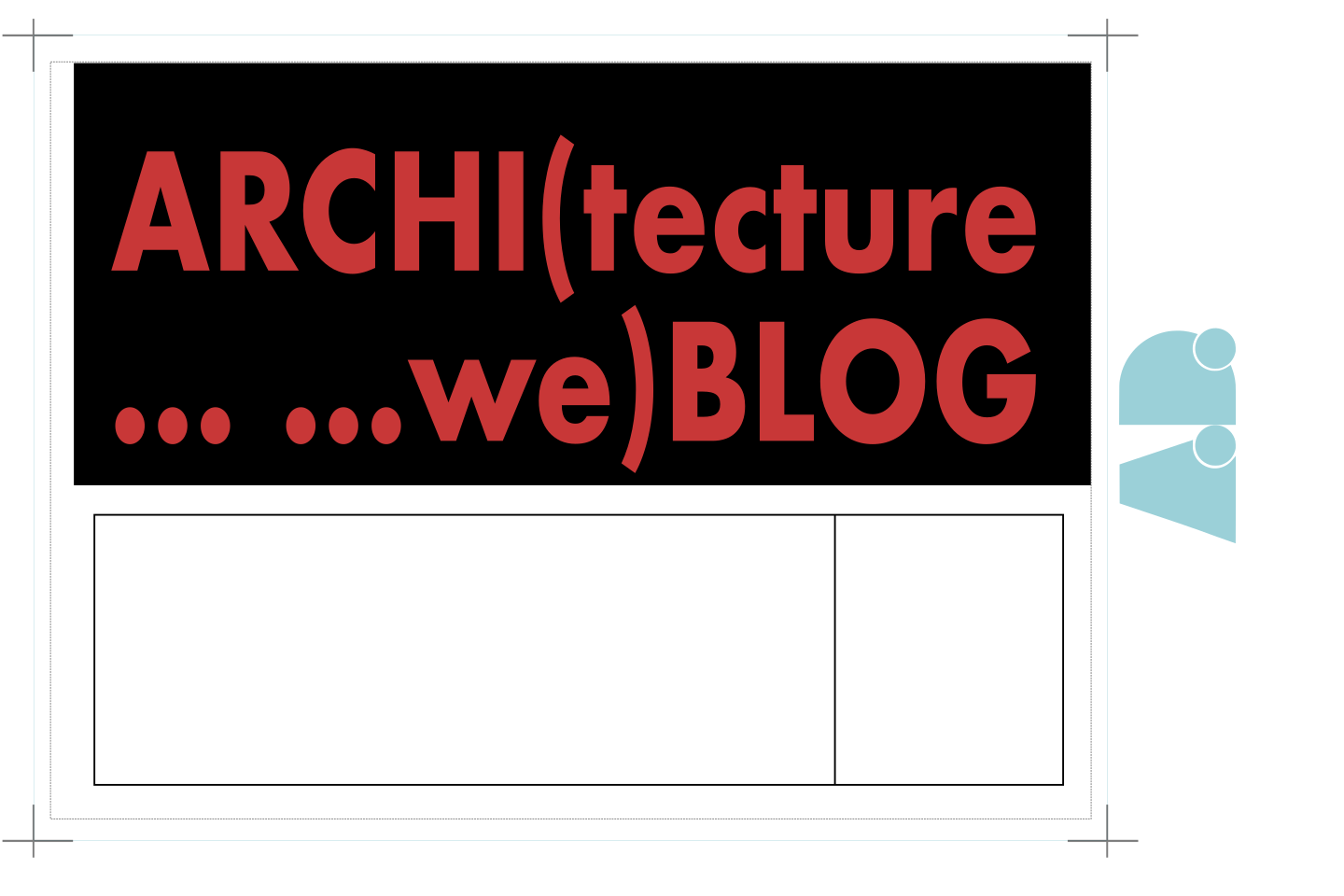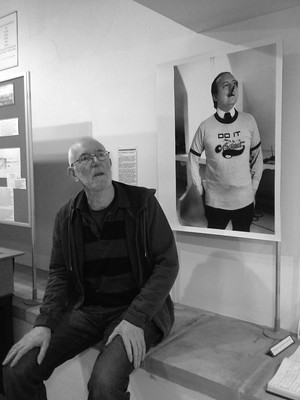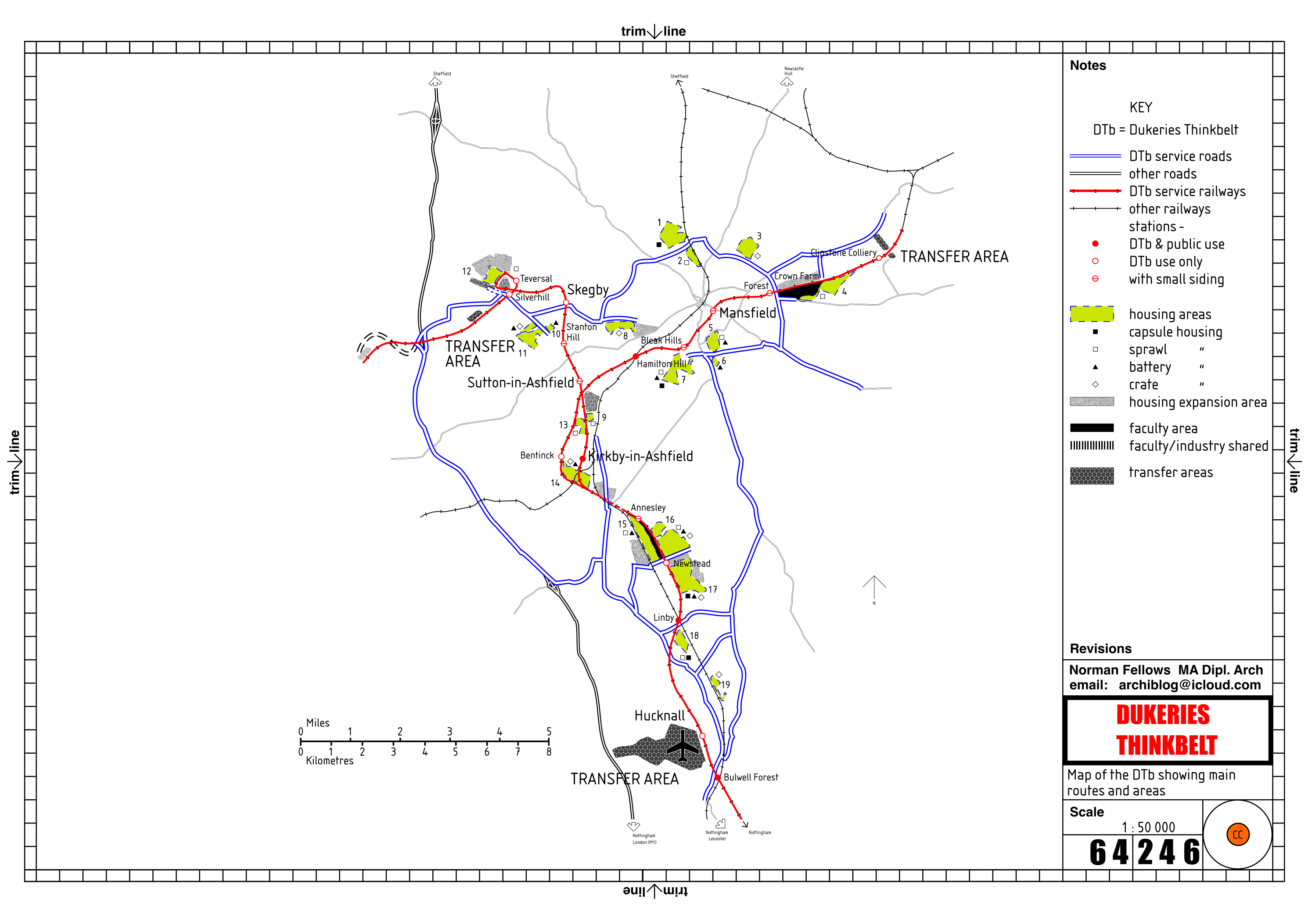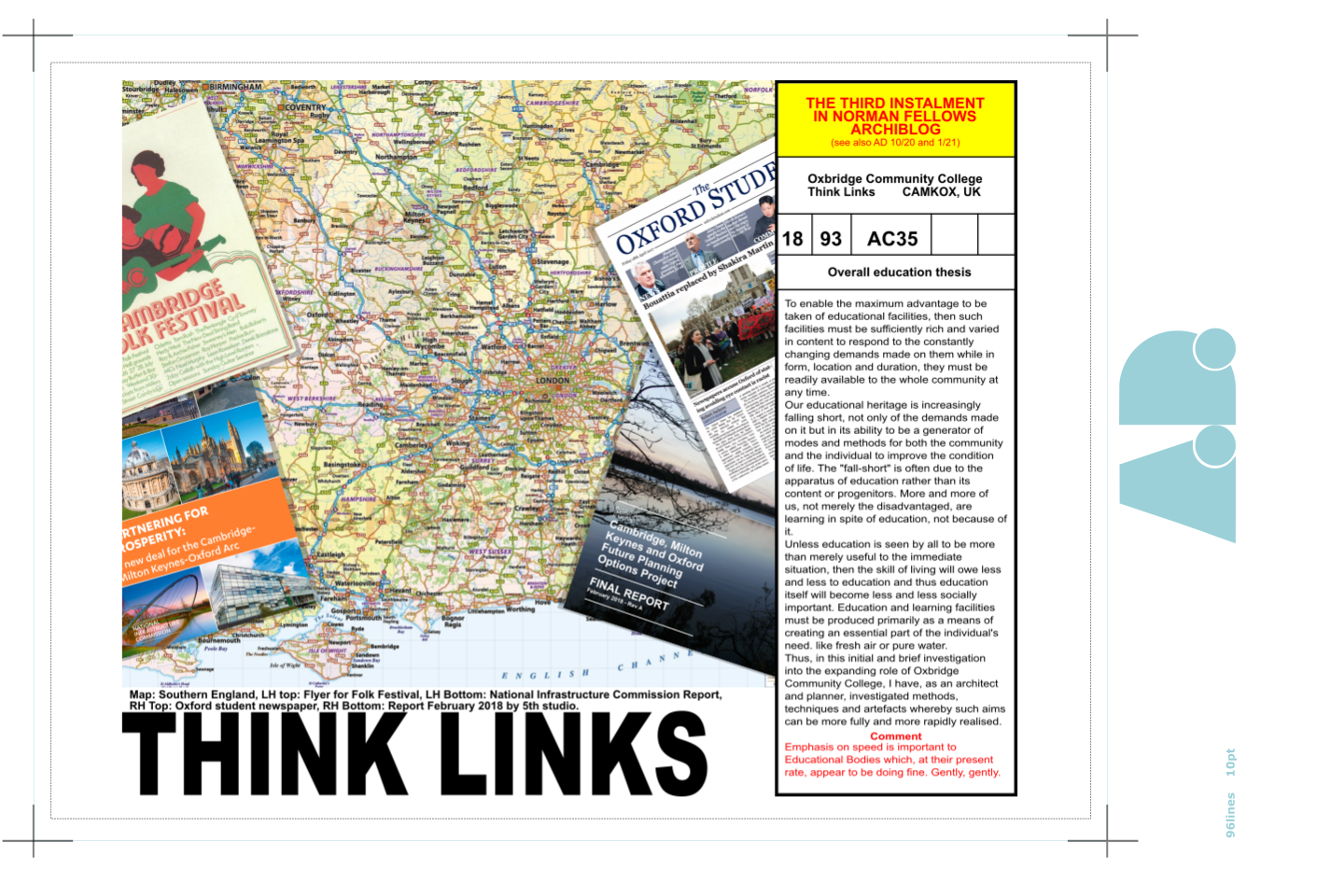Archiblog's Ordering
• Double page spread introducing 'Edukit: World Educational System' in AD by Norman Fellows Archiblog [1]
‘Designing Buildings’ features an article entitled ‘Anticipatory Design‘ by Norman Fellows under the pseudonym of “Archiblog”. The author’s website dovetails his office jobs with those Cedric Price (CP) was engaged with and includes a reference to what CP called ‘anticipatory design’:—
“To establish a valid equation between contemporary aspirations and architecture it is essential to add to the latter doubt, delight and change as design criteria. Architecture is slow and therefore anticipatory design is required.”
- Cedric Price (1996) ‘Anticipating the unexpected’, Architects’ Journal, 5 September
Thus this article by Norman Fellows takes the 1996 quote as a starting point in order to enable others to match their orderings against an anticipatory design, namely, ‘Archiblog’s Ordering’.
[edit] Introduction |
Norman Fellows at the St John's College exhibition, called 'Cedric Price: Outside the Box', on December 23, 2014. Photograph: Patricia Fellows |
[edit] 2017 - Dukeries ThinkbeltA plan for an advanced educational industry in West Nottinghamshire
|
[edit] 2017 - DomestikitThe short-life house as a national service
|
[edit] 2017 - Atom UK |
 Learn More Learn More
|
[edit] 2018 - EdukitWorld Educational System |
[edit] 2018 - Oxbridge Community CollegeThink Links, CAMCOX, UK |
[edit] ConclusionsThis article affirms its premises and concludes that continuous anticipatory design is required. |
|
[edit] References
- Fellows, N. (2018) 'Edukit: World Educational System' [1]
--Archiblog 13:52, 8 Jan 2023 (BST)
[edit] Archiblog's articles on Designing Buildings
- AD: A great little mag!
- Anticipatory Design
- Archiblog's Ordering
- ATOM: A generating system designed by Cedric Price
- Beeching cuts: The railway network in Nottinghamshire
- Bucky's Ordering
- Cedric Price
- City Cluster, City of London
- City Cluster, Kit of Parts
- Co-operative Housing
- Disaster Planning
- Disaster Planning: North Staffs
- Disaster Planning: Notts
- Disaster Planning: School Buildings
- DOMESTIKIT: World-Wide Dwelling Service
- DOMESTIKIT: UK
- Dukeries Thinkbelt
- EDUKIT: World Educational System
- EDUKIT: UK
- Generator
- Geographic Information Systems: QGIS
- Housing in the UK
- Housing in the UK: Datasets
- Housing Research by Cedric Price
- Hudson Yards: Manhattan
- Miners' Strike
- Miners' Strike: The coal industry in Nottinghamshire
- Norman Fellows
- Potteries Thinkbelt
- Potteries Thinkbelt study
- Potteries Thinkbelt study: Further ongoing research
- QGIS "What about Learning More?"
- The Commons
- The Commons: City of London
- The Commons: Manhattan
- The shadow institution
- The Shed
- Varsity Line
[edit] Related articles on Designing Buildings
Featured articles and news
Gregor Harvie argues that AI is state-sanctioned theft of IP.
Many resources for visitors aswell as new features for members.
Using technology to empower communities
The Community data platform; capturing the DNA of a place and fostering participation, for better design.
Heat pump and wind turbine sound calculations for PDRs
MCS publish updated sound calculation standards for permitted development installations.
Homes England creates largest housing-led site in the North
Successful, 34 hectare land acquisition with the residential allocation now completed.
Scottish apprenticeship training proposals
General support although better accountability and transparency is sought.
The history of building regulations
A story of belated action in response to crisis.
Moisture, fire safety and emerging trends in living walls
How wet is your wall?
Current policy explained and newly published consultation by the UK and Welsh Governments.
British architecture 1919–39. Book review.
Conservation of listed prefabs in Moseley.
Energy industry calls for urgent reform.
Heritage staff wellbeing at work survey.
A five minute introduction.
50th Golden anniversary ECA Edmundson apprentice award
Showcasing the very best electrotechnical and engineering services for half a century.
Welsh government consults on HRBs and reg changes
Seeking feedback on a new regulatory regime and a broad range of issues.
CIOB Client Guide (2nd edition) March 2025
Free download covering statutory dutyholder roles under the Building Safety Act and much more.








